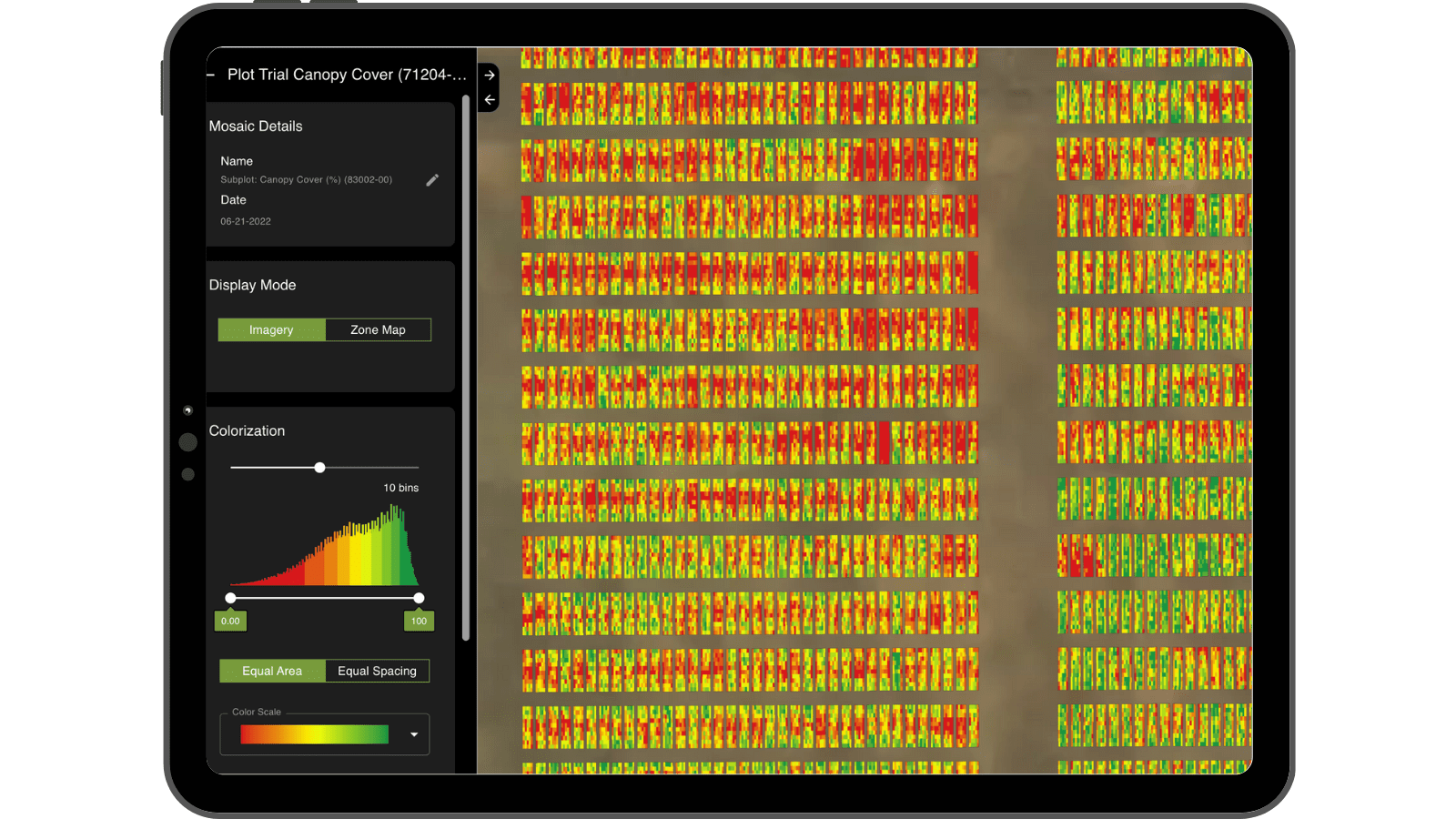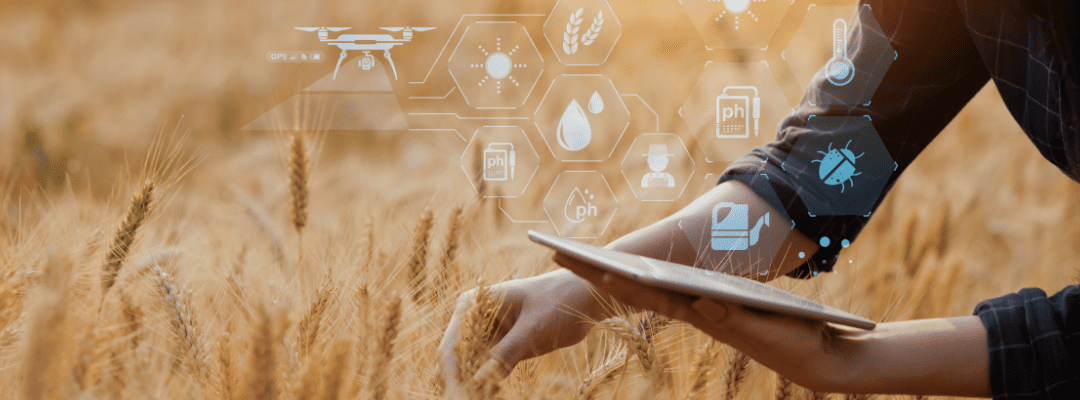In what seems like has been a blink of an eye, we are already hitting the middle of August and quickly approaching the end of the growing season. And chances are, you’ve been capturing data since the very beginning stages of this year. A time when you had lofty goals to process, review, and analyze this data – but likely a tall order given all else that happens throughout the season. That is ballpark thousands upon thousands of data points – with most likely not all being used.
So, with the season coming to an end, what should you do with your leftover data?
It doesn’t hurt to take a second look at the data you captured throughout the season – especially the data that has not been processed. The insights provided by revisiting this data can help you:
- Dive deeper into the data you haven’t processed
- Develop and tell your season’s story
- Help to validate key outcomes, predict upcoming seasons, and fuel future decisions
Diving Deeper in Your Data with Multispectral Imagery
Taking another look at the leftover data gives the opportunity to dig even deeper with the help of multispectral imagery. Bringing in multispectral indices, like Normalized Difference Vegetation Index (NDVI) and Normalized Difference Red Edge (NDRE), goes beyond what is seen by the naked eye giving you a deeper understanding of what is happening within your plots or fields.
Gaining a better understanding of crop stress and indicating what is causing it can help to determine product performance. And, understanding crop health throughout the season often works best when you can evaluate the trends over time.
Whether it be the use of inputs or comparing seed traits, monitoring the stress and health throughout the season with multispectral imagery provides deeper insights into whether or not it is effective. This can help to translate over to next year’s decisions, helping you augment the product development lifecycle – saving you money and ensuring the right performance metrics are being evaluated.
Processing with multispectral indices, like NDVI, also helps to be comparative of different products, inputs, and even times. With RGB imagery or the naked eye, you may not be able to pick up on some differences in performance but adding the multispectral aspect uncovers what may have been missed while still giving the big picture that aerial imagery provides. Digging deeper provides an amplified understanding of performance of one product versus another or one plot with herbicide versus another without, among other examples.
Often times, multispectral imagery may be captured throughout the season to get an indication of what was happening in that point in time – but this data can then be leveraged for deeper analytics. For instance, multispectral data can be used to generate Plot Canopy Cover and Uniformity analytics, which helps to characterize the extent of green vegetation and gives an indication of plant cover, biomass, and leaf area index.

When you already have the data in hand and it has served the use case that you already defined, giving data another look can offer a number of benefits, from helping to get that essential snapshot to showcase the difference in product performance, or offering supplemental data points that can be leveraged in a research paper or thesis.
Building and Telling a Comprehensive Story
When you read a book – or even watch a movie – for the first time and begin to piece together the plot, there are often foreshadowing events that may have been overlooked initially. And thus, the story gets a little bit better the second time around. This can also be the case when capturing and analyzing data.
With aerial imagery capturing hundreds to thousands of data points, it is often difficult to process it all and we often look at what stands out most – so what if there is valuable data that was looked over?
The masses of data collected from the beginning of the growing season to after harvest all come together to tell a comprehensive story of the season. When building your ag data story, it typically focuses on recounting the tales of each of the growth stages throughout the season. This story is usually compiled of four main chapters, including:
- Early-season emergence, typically monitored by analytics like Stand Count that give first indication of uniformity, health, and performance.
- Mid-season analytics, such as Crop Health analytics, are used to understand growth, stress, and fuel necessary decisions during the season.
- End of season outcomes, using these late-season analytics to get a final look at yield potential and make any last-minute decisions to maximize outcomes.
- Post-season analysis, which relates to analytics that help to perform field performance analyses to get the full picture of the year and help to prepare for the next growing season.
But what if a part of your story was missed with the initial analysis?
Processing your data for the second time could pick up on a significant part of your story’s plot that may have been looked over. Piecing the data in a different way could help to offer a new way of looking at the results, and extrapolating essential data points that can be useful in validating decisions and outcomes for this season – as well as informing what should happen for the season ahead.
For instance, using Plot Canopy Cover at multiple points in the season can help identify changes in growth. As a post-season analysis, this can be extremely beneficial in understanding how key inputs impacted outcomes – and where differences may lie in the process. This can be useful in identifying the vigor of seeds, understanding plant growth trends, and even looking at canopy senescence.
Leveraging Leftover Data to Plan for a More Successful Future
Leftover data from this season can help inform your decisions for this development cycle, as well as inform decisions for the year ahead.
But it doesn’t stop there. Historical data from past years can assist in predicting future seasons and thus fueling decisions – helping to validate outcomes for seed breeding and product development, meaning that you can slice the pie in several different ways and see exactly what’s happening.
You can get your pie and eat it, too. From understanding new patterns in growth or health to monitoring environmental and climate changes through the years and its impact on performance. Sentera’s Lookback Program provides the necessary toolset needed to process this data from past seasons.
With the goals of a more productive and sustainable future, revisiting leftover data – as well as any historical imagery – could be the answer in making the decisions needed to do so. The insights gathered from giving leftover data another look can help to fuel these necessary decisions that lead to better outcomes to maximize this season and the ones ahead.


